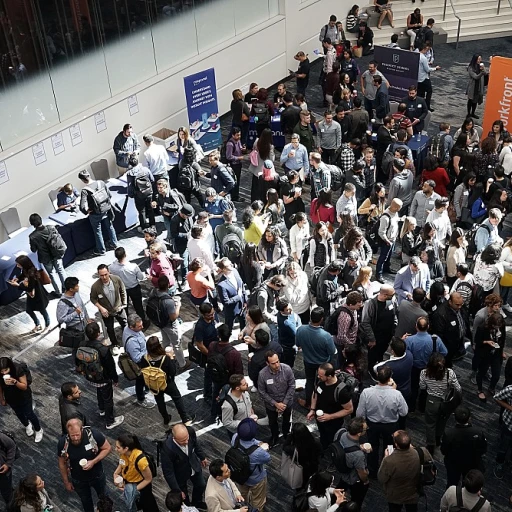
Understanding the Role of a Chief Human Resources Officer
Decoding the Responsibilities of a Strategic Leader
The role of a Chief Human Resources Officer (CHRO) is a cornerstone in large organizations, fundamental to the evolving landscape of workforce management. As a strategic leader, the CHRO is responsible for aligning human resource strategies with the company's long-term business goals. This pivotal role involves not just understanding the current workforce but also anticipating future staffing needs through effective human resource forecasting.
In the realm of human resources, forecasting plays a crucial role. It involves predictive analytics and trend analysis, which help in understanding labor demand and resource needs. The CHRO is expected to have a comprehensive grasp of both historical data and future trends to lead the evolving HR landscape effectively.
Building Relationships and Tools for Success
Another crucial aspect of the CHRO's role is building and maintaining strong relationships across the company. This involves collaborating with other departments to ensure a cohesive approach to workforce planning and resource management. Developing workforce forecasting strategies is not a solitary effort; it demands a collaborative approach that employs various tools and techniques to meet the multifaceted needs of the business.
Planning for the Future
As the guardians of the company's human capital, CHROs must employ scenario planning and demand forecasting to prepare their organizations for future challenges. This foresight is essential to meet the company's business goals and keep pace with emerging trends. The integration of technology in HR processes is another area where the CHRO needs to focus. Embracing technology not only streamlines operations but also offers insights through data analysis that are invaluable for talent acquisition and resource planning.
Crafting Tailored Strategies
- Utilizing predictive analytics for better resource forecasting
- Implementing scenario planning to address potential business challenges
- Engaging in continuous analysis of workforce trends and employee demands
- Fostering a culture of adaptability and growth within HR teams
The role of a CHRO is both challenging and rewarding, requiring a balance between strategic foresight and tactical resource management. By staying ahead with best practices in workforce planning and demand forecasting, CHROs are well-placed to lead their companies towards future success.
The Importance of Forecasting Human Resources
Significance of Anticipating Human Resources Demand
In today's rapidly evolving business landscape, the ability to anticipate workforce needs is crucial for aligning human resource strategies with broader company goals. Effective forecasting of human resources extends beyond merely predicting headcount requirements; it involves a comprehensive analysis of future talent requirements and resource management. Incorporating dynamics of supply and demand in HR leadership ensures that businesses are well-equipped to tackle forthcoming challenges. A forward-looking approach facilitates optimal workforce planning, empowering businesses to adapt to market shifts and evolving industry demands efficiently. Key aspects include:- Demand Forecasting: Leveraging historical data and predictive analytics allows for accurate demand forecasting. This enables businesses to plan proactively and mitigate risks associated with sudden changes in employee numbers.
- Scenario Planning: Preparing for various future scenarios based on current workforce trends and data analysis helps businesses maintain flexibility in talent acquisition and retention strategies.
- Resource Management: Effective resource planning ensures that the right resources are allocated at the right time, optimizing operational efficiency and aligning with business objectives.
- Talent Analysis: Regular analysis of talent trends aids in identifying skill gaps and formulating strategies to fill them, thereby supporting sustainable workforce growth.
Key Challenges in Workforce Forecasting
Overcoming Common Obstacles in HR Forecasting
Workforce forecasting presents several challenges that HR leaders need to address to align with their company's business goals. One significant challenge is managing the dynamic nature of today’s business landscape, which can make accurate demand forecasting complex. Understanding and predicting workforce needs requires analyzing historical data, incorporating scenario planning, and maintaining a strategic focus on resource planning. Another key challenge is balancing the current workforce capabilities against future staffing demands. This involves talent management strategies that ensure the organization can adapt to changing circumstances. Predictive analytics can aid in anticipating these shifts, but its success relies heavily on the quality and timeliness of the data involved. Additionally, integrating resource forecasting with human resources strategies is crucial. Adjusting to future trends requires the ability to merge data analysis with human insights, providing a comprehensive view of talent acquisition needs. Addressing frequently asked questions around workforce planning can also help in identifying gaps and opportunities within resource management. The workforce planning process itself is often hampered by a lack of precise data or limited tools available for proper analysis. Effective strategies should incorporate data-driven forecasting methods to ensure accurate projections. Engaging in trend analysis and demand forecasting are among the best practices to anticipate future talent requirements and align them with the company’s long-term objectives. To learn more about the digital transformation in human resources that can aid in overcoming these challenges, visit this resource. Here, you’ll find insights on integrating technology into human resource strategies, essential for tackling these forecasting challenges.Tools and Techniques for Effective HR Forecasting
Utilizing Advanced Methods for Accurate HR Forecasting
Effective forecasting in human resources demands a strategic alignment with both current and projected business goals. As the landscape of workforce forecasting evolves, it's imperative to deploy advanced tools and methodologies that enhance the accuracy of future staffing assessments. The key challenge lies in transforming raw data into actionable insights which require a blend of cutting-edge technology and strategic thought.- Predictive Analytics: At the heart of effective workforce forecasting is the use of predictive analytics. This involves using historical data to anticipate future demand and employee trends. Patterns and trends in employee turnover and hiring needs become clearer, allowing for proactive talent acquisition and management strategies.
- Trend Analysis: By carefully analyzing current workforce and market trends, companies can better understand how external and internal factors may impact demand forecasting. This insight is crucial for aligning resource management with business objectives.
- Scenario Planning: Scenario planning involves considering multiple potential futures. This technique prepares human resources teams for various possible outcomes, such as changes in economic conditions or shifts in employee expectations. Creating these scenarios can help in developing flexible workforce planning strategies.
- Integrated Software Solutions: Implementing integrated HR software solutions can streamline the forecasting process by consolidating data from different sources. With real-time access to workforce data, HR departments can execute more accurate and time-sensitive resource forecasting.
Integrating Technology in HR Forecasting
Leveraging Technology for Forward-Looking HR Strategies
Incorporating technology into workforce forecasting is more than merely a step forward; it's an indispensable approach for aligning human resources with broader business goals. As companies venture into future staffing, technology introduces refined precision and efficiency in the forecasting process. Integrating technology involves using predictive analytics tools, which offer HR departments the ability to conduct complex data analysis. This technique can predict future talent demand by analyzing historical data and current workforce trends. Through predictive analytics, HR leaders can make informed decisions that align with company needs and resource planning goals. Certain technologies empower HR professionals to engage in effective scenario planning. This involves creating multiple potential scenarios that a company might face concerning workforce needs. By exploring different scenarios, HR can devise strategies that adapt to various business demands as they evolve over time. Moreover, the focus on technology doesn't end with data analysis. Tools such as AI-driven recruitment platforms revolutionize talent acquisition by identifying top candidates faster and with greater accuracy. This advancement not only aids in meeting immediate human resource needs but also assists in planning for long-term talent management. Resource management tools also play a crucial role in keeping track of employee performance, and skill levels, and identifying gaps. Such insights are invaluable for determining which areas will need further development to meet future business objectives. To achieve the best practices in workforce forecasting, integrating technology is not a choice but a necessity. This alignment ensures that human resources can proactively meet the ever-changing business environment, optimizing both resource deployment and strategic workforce planning.Future Trends in Human Resources Forecasting
Emerging Patterns and Predictions for HR Leaders
The future of human resources forecasting is continuously evolving. As companies gear up to meet their business goals, HR leaders need to stay ahead of the curve by embracing the latest trends and practices in workforce forecasting. Here are some key trends that are reshaping the landscape of human resource departments:
- Enhanced Data Analysis: The integration of predictive analytics in workforce planning allows HR leaders to make informed decisions. By utilizing historical data and trend analysis, businesses can anticipate future staffing needs with greater accuracy. This approach helps address demand forecasting challenges and resource planning efficiently.
- Technology Integration: Utilizing advanced HR technologies and tools streamlines the forecasting process. Many organizations are investing in resource management software that centralizes employee data. Having all the human resource data in one place simplifies the analysis and enhances strategic planning.
- Agility in Talent Management: With the unpredictable nature of business, companies need agile workforce strategies. This flexibility allows businesses to adapt quickly to market changes and ensure they have the right talent at the right time.
- Remote Work Considerations: As remote work continues to influence the job market, it's essential for HR leaders to anticipate how these changes impact future staffing. Workforce planning strategies should consider remote and hybrid work models when forecasting human resource needs.
- Scenario Planning: This strategic approach involves preparing for multiple potential future scenarios. By exploring different possibilities, HR leaders ensure they remain proactive in tackling various challenges that might arise.
In conclusion, the future trends in HR forecasting focus on optimizing processes through data-driven strategies and technology. For chief human resources officers, staying informed on these trends will be invaluable in aligning workforce needs with the company’s overarching business goals.












